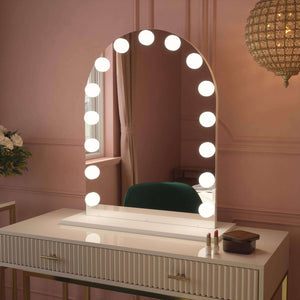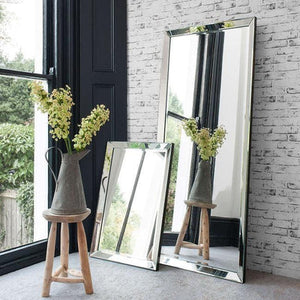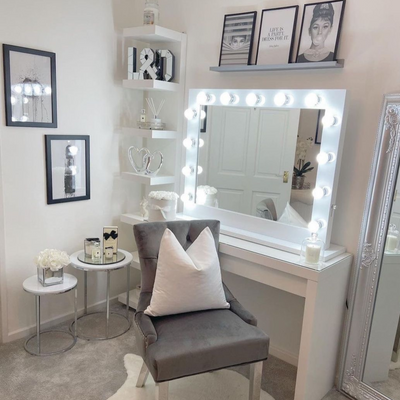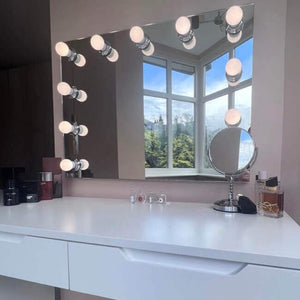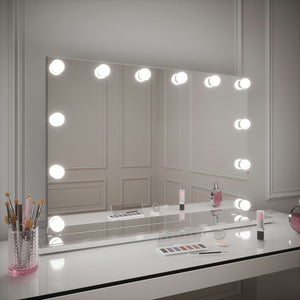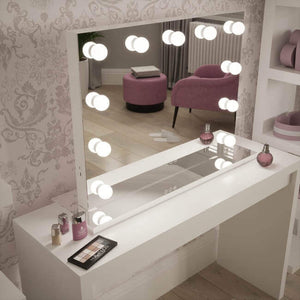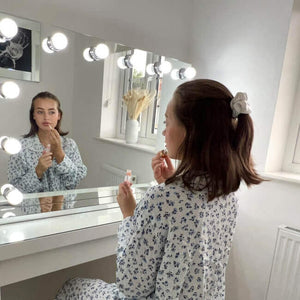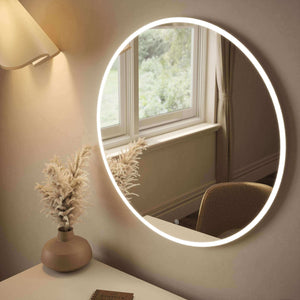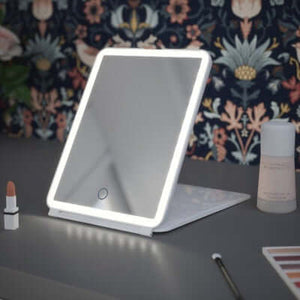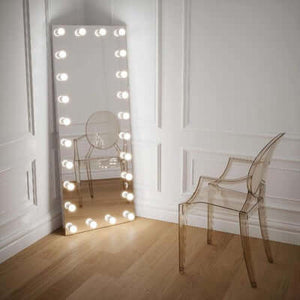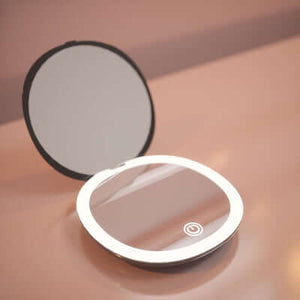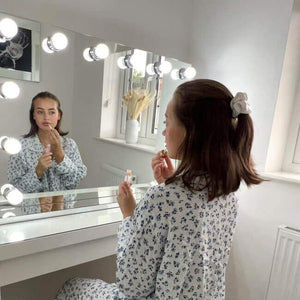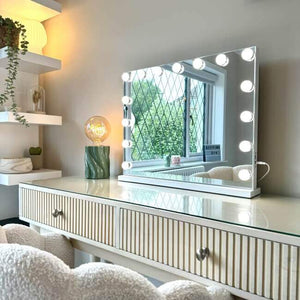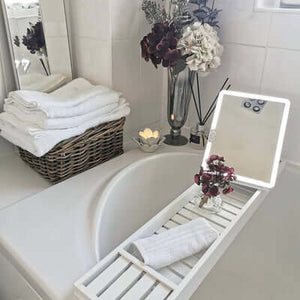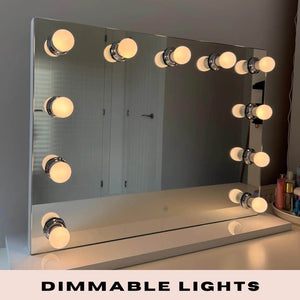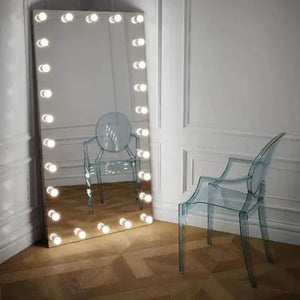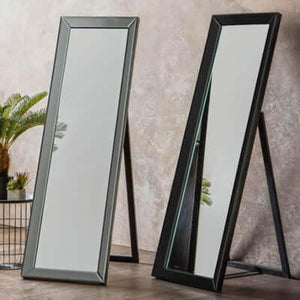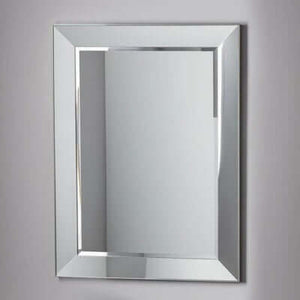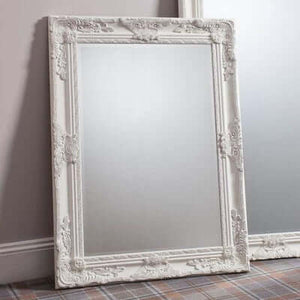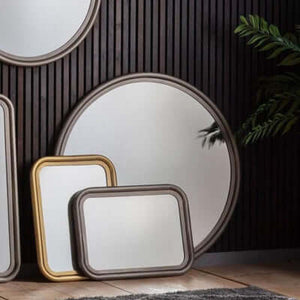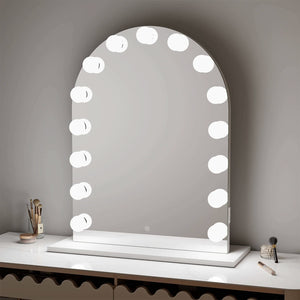Learning to clean a mirror without streaks might seem like a simple thing. However, if you’ve ever had to scrub a smudge from a piece of glass before, you’ll know how complicated the process can be. You need to find a way to apply the right amount of pressure without damaging your mirror or compromising its signature shine.
While a vanity dressing table mirror is one of the best ways to enhance the overall image of your home, whether in your bedroom, living room, dining room, or hallway, cleaning mirrors is one of the most challenging aspects of maintaining them in good condition.
Having a crystal-clear mirror is not just about aesthetics; it plays a crucial role in various aspects of daily life. For instance, a clean mirror is essential for anyone who is into makeup. The importance of having a pristine mirror lies in the precision required for makeup application; for that reason, it can be helpful to read a makeup essay to delve deeper into this topic.
Ultimately, you need to regularly commit to the cleaning process if you want your mirrors to look their best. However, it often feels as though you need a magical glass cleaner or a unique cleaning solution to leave the glass streak-free.
The Cleaning Solution is Glass Cleaner & Microfiber Cloth
Today, we’re going to explore the most effective way to clean the entire surface of your mirror quickly and efficiently, without leaving any streaks or smudges.
Before You Clean Your Mirror
Preparation is critical if you want to clean a mirror perfectly. From making sure you have the right cleaning solutions on hand to checking the detailed information on your mirror’s product description, it’s best to plan.
First and foremost, it’s worth checking out the information you get with your mirror when you buy it. Depending on the type of mirror you choose, you may need to be cautious about the cleaning substances you use. This is particularly important when cleaning the frame around the mirror, as certain substances can harm your chosen finish.
Once you’ve checked the instructions, set aside time to clean your mirror regularly. Using a lint-free microfibre cloth to brush over your mirror every so often will help prevent dirt and grime from building up over time. This means you won’t have to do as much work to get your mirror perfectly clean in the future. If you commit to regular cleaning, you should only need to do a comprehensive cleaning session when the glass is exposed to liquids or sprays.
To get the most out of your cleaning session, you’ll need:
· A homemade cleaning solution or rubbing alcohol in a spray bottle
· A microfibre cloth or lint-free rag
· Warm water to wipe away any cleaning solutions
· Glass cleaner for dirtier areas
· A cotton pad or old rags for spot cleaning
Quick Tips: Golden Rules for Clean Mirrors
Here are some quick rules to follow when cleaning your mirror.
1. Avoid soaps and scented products
Soap is usually the first product we gravitate towards when cleaning anything. However, soap naturally leaves residue behind on any product, meaning you need to rinse the surface multiple times with a clean cloth before getting your mirror sparkling again.
Avoid cleaning products containing soap or dish detergent, and refrain from using scented products whenever possible. A scented cleaning solution will often have more substances that can be difficult to remove from the surface of your mirror. For instance, there might be an essential oil you can’t entirely remove without constant scrubbing with your microfibre cloth.
Soaps and additives also don’t evaporate as quickly at the end of the cleaning process, which means you’re left with stains that make your mirror look worse than when you started.
2. Consider natural cleaners
Unless you have a window cleaner or streak-free mirror cleaner that consistently works for you, it’s usually best to stick with a natural cleanser. Natural cleaners didn’t contain the same soaps and added components that contaminate the cleaning process and leave strokes.
Instead of grabbing the dish detergent or soap, try apple cider vinegar or white vinegar as a reliable way to remove stains quickly and easily. White vinegar is particularly effective at removing all kinds of colours and leaving you with a streak-free mirror.
Apply a small amount of vinegar to one of your microfibre cloths and work from the top left corner of the mirror down to the bottom right in circular motions. You can also try a little lemon juice if you don’t like the smell of white vinegar.
If you only need to clean a small part of the glass on your mirrors, you can use a cotton pad or an old toothbrush instead of washing the entire mirror with one of these natural cleaning products.
If you have dirty areas on your mirror, try adding rubbing alcohol and lemon juice to a spray bottle or use a glass cleaner.
3. Learn the proper cleaning techniques
Once you’ve got your rubbing alcohol or natural cleaning solution ready, the most important thing you can do is master the appropriate cleaning technique.
When cleaning mirrors, it’s best to use circular motions to help buff away stains without leaving any streaks. Apply your homemade cleaning solution or rubbing alcohol to a cotton pad or one of your flat-weave microfiber cloths, and gently work your way down the mirror in a circular motion. Working from top to bottom will mean that if your homemade glass cleaner drips, you won’t leave any streaks behind.
Take your time to tackle all the stains carefully, and avoid rushing the process. It can take time to clean a mirror properly, but it’s worth it to have a sparkling clean surface.
Try a side-to-side cleaning pattern if you’re struggling to get your mirror to look perfect with the circular motion or still see remaining marks on the surface. A cleaning expert will tell you this motion can help to avoid static electricity.
What’s the Best Tool for Cleaning Mirrors?
To avoid streaking, homeowners have used various cleaning solutions to make their glass shine in the past, from old rags and paper towels to newspapers. Ultimately, the best cleaning product will usually be a microfiber cloth. If you use a microfiber cloth or multiple microfiber cloths to wipe your mirror clean, you won’t have to worry about leaving lint behind on the mirror.
When using a microfiber cloth, get one and wet it, then keep the fabric dry and wipe down streaks. Then, use a separate cloth to remove the moisture from your mirror. A mixture of vinegar and water or a simple solution with rubbing alcohol can be all it takes to get your mirrors looking perfect.
Remember to ensure the mirror is fully dry after removing the dirt. Dust could settle on it and make it look dirty again if you leave any vinegar, water, or rubbing alcohol behind. You’ll also have a greater risk of streaks.
How to Clean a Mirror without Streaks: Step by Step
Now that you have our top tips for cleaning mirrors without streaks, you’re ready to tackle every mirror in your home, removing stains and messes. Keeping the cleaning tips above in mind, follow these steps:
-
Spot clean: Using some rubbing alcohol on a cotton pad, gently remove any remaining large smears of dirt or grime. Think of the toothpaste or hairspray splatters that usually end up on a bathroom mirror.
-
Spray the mirror: After removing the more prominent stains, use your vinegar and water mixture to mist the entire mirror lightly.
-
Fold your cloth: Fold the microfiber cloth into quarters, creating four clean surfaces to work with as you clean.
-
Start scrubbing: Starting at the top left of your mirror, drag the cloth across to the top right corner, then swoop down slightly and head back to the left side in a zig-zag motion. Continue this S-pattern strategy to wipe the entire surface of the mirror.
-
Check for marks: Place the mirror at a 45-degree angle and examine it in the light to look for any streaks and scuff marks that may be invisible. Use circular or left-to-right motions to remove the residue from your streaky mirror with the dry side of your cloth.
-
Make sure the mirror is dry: Ensure the entire mirror is dry, as many mirror cleaners can dry to leave residue behind on the glass if not handled carefully.
Remember, for spotless mirrors, you’ll need to ensure you wash the frame of your mirror and the glass. Using your existing microfiber cloth or a paper towel, gently wipe down the outside of the mirror frame to remove any dust buildup.
If you notice any stains on the mirror frame, you may need to use a special cleaner or reapply your cleaning spray to remove them. Remember, don’t use anything corrosive or abrasive on your mirrors, no matter how difficult a stain is to remove, as this will damage your mirror’s design.
Enjoy Your Clean Mirrors
If you have a microfiber cloth and a little time, you have everything you need to clean your mirrors perfectly and keep them in excellent condition for years to come. Whether you’re rinsing toothpaste off bathroom mirrors or trying to get rid of hairspray from the mirror in your bedroom, proper cleaning techniques are essential.
While a vanity dressing table mirror is one of the best ways to enhance the overall image of your home, whether in your bedroom, living room, dining room, or hallway, cleaning mirrors is one of the most challenging aspects of maintaining them in good condition.
Having a crystal-clear mirror is not just about aesthetics; it plays a crucial role in various aspects of daily life.
A smudge or streak on the mirror can distort the reflection, making it challenging to achieve a flawless makeup look.
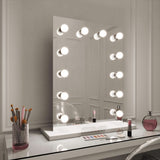 Alicia PRE ORDER - END OF SEPTEMBER. Hollywood Mirror 60cmx80cm
Alicia PRE ORDER - END OF SEPTEMBER. Hollywood Mirror 60cmx80cm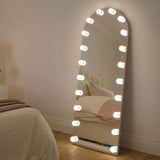 Angelina Full Length Arch Hollywood Mirror 160 x 60cm
Angelina Full Length Arch Hollywood Mirror 160 x 60cm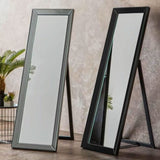 Angled Luna Mirror-Cheval Black
Angled Luna Mirror-Cheval Black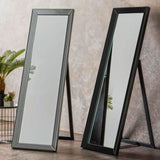 Angled Luna Mirror-Cheval Gray
Angled Luna Mirror-Cheval Gray

